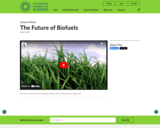
Meet some of the new species that Academy researchers discovered last year and understand why it's important to collect.
- Subject:
- Mathematics
- Science
- Material Type:
- Interactive
- Provider:
- California Academy of Sciences
- Date Added:
- 04/12/2021

Meet some of the new species that Academy researchers discovered last year and understand why it's important to collect.

A fun music video exploring the different types of amphibians and their characteristics. [2:17]

How does mimicry work in butterflies? Academy researcher Durrell Kapan and his colleagues have found the answer in one butterfly's genome.

Lightweight, mobile microscopes are not only being used in third world countries to diagnose disease, but also in classrooms to get kids excited about science.

Are facial expressions learned or innate? [2:58]

A video showing how the scientific process is not a linear step-by-step process but rather can be illustrated with a flow chart. Follow scientist through this dynamic process as they discover a new species of spider found in a cave. [5:53]

The Academy's Zeray Alemseged's recent discovery pushes human tool-use back over 800,000 years. [2:57]

The Hubble Telescope's latest image shows 13 billion-year-old infant (and still forming) galaxies. [1:25]

Comparing the differences in the Y chromosomes in chimps and humans has created quite a buzz. [1:48]

Scientists at Lawrence Livermore Laboratory are hoping that nuclear fusion will become an energy source in the near future. [2:11]

A mobile app, designed by researchers at UC Berkeley, is helping citizens track Sudden Oak Death. [2:40]

Plastics are surfacing in our oceans. What's the solution? [3:30]

Academy researcher Jens Vindum explains his fieldwork in Myanmar. [3:15]

The non-profit B612 Foundation aims to build, launch, and operate the first privately funded deep space mission-a space telescope in orbit around the Sun that will map the inner Solar System in search of asteroids that could impact Earth.

Take a peek into the Academy's Center for Comparative Genomics with the lab's director, Brian Simison. Learn how cutting-edge technology is changing the way our scientists work.

Dr. Peter Fritsch, Curator, Department of Botany at the California Academy of Sciences, describes how over the period of 10 years he and colleagues discovered the first carnivorous plant species known to trap and digest worms underground using adhesive leaves.

Protecting a small native plant, once thought to be extinct, proves to be tricky business.

The future of biofuel technologies needs to take a whole-picture approach. [3:23]

Studying the evolutionary history of viruses Shannon Bennet is facinated by the life history of parasitism. Where do these Viruses occur in nature, how many of them are there, and how do they switch into new hosts?

Make sure you know how to view a solar eclipse safely! Includes the history and science behind solar eclipses.